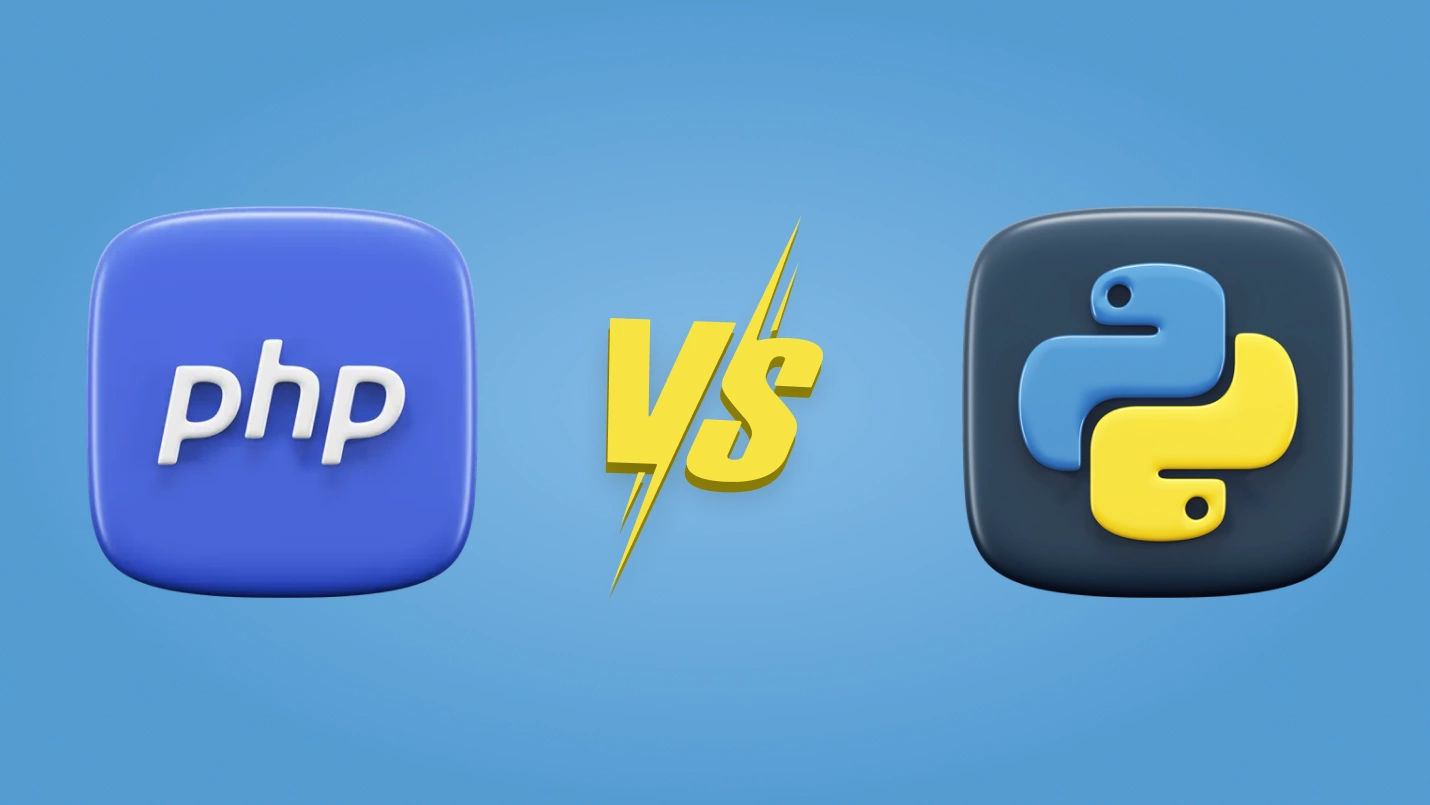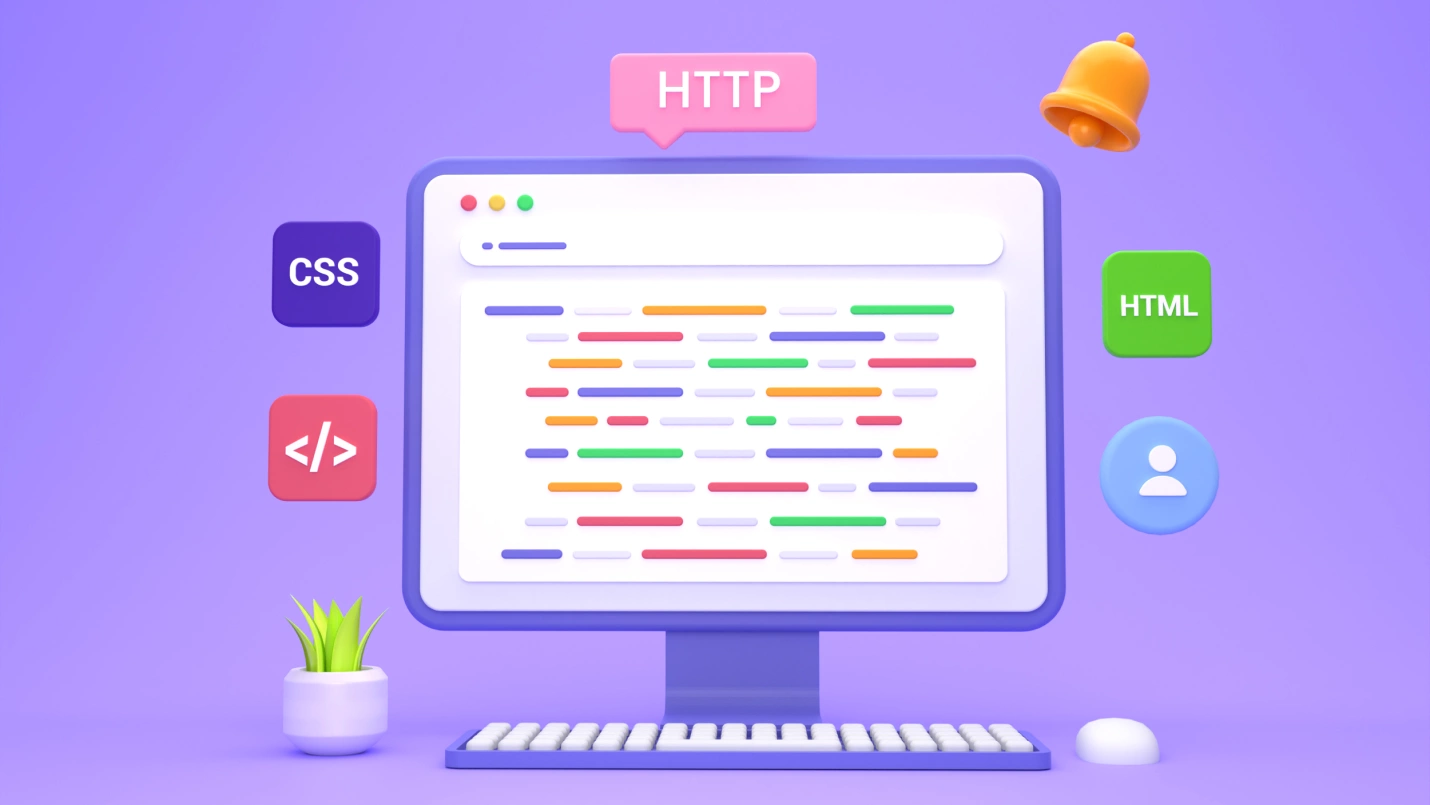In today’s highly disruptive technology world and ever-evolving web development solutions, PHP and Python are the most popular server-side languages most businesses prefer. However, choosing a side in the “PHP vs. Python” debate isn’t easy. While many websites are programmed in PHP, Python has seen a steep upward trend over the past two years.
If you’re wondering whether Python development suits your project or if you should stick to PHP, you’ve come to the right place.
We’ll open the post with some basics about the two languages. Then, we’ll proceed to the comparison, in which we’ll evaluate PHP and Python across various factors, such as
- Speed to Market,
- Security,
- Performance,
- Versatility,
- Scalability,
- Ease of installation,
- Debugging
- Web framework options,
- Environment Management,
- Developer Community & Support
- Documentation
Let’s dig in.

We respect your privacy. Your information is safe.
PHP vs. Python: The basics
What is PHP?
PHP is a scripting language first released in 1994 by Rasmus Lerdorf. Though most commonly used for web development solutions, PHP is a multi-purpose programming language. The name of the language initially stood for “Personal Home Page.” Later, it became a recursive acronym meaning “PHP: Hypertext Preprocessor.” Over the years, PHP has become one of the most popular technologies used in web development, though its design has attracted some criticism.
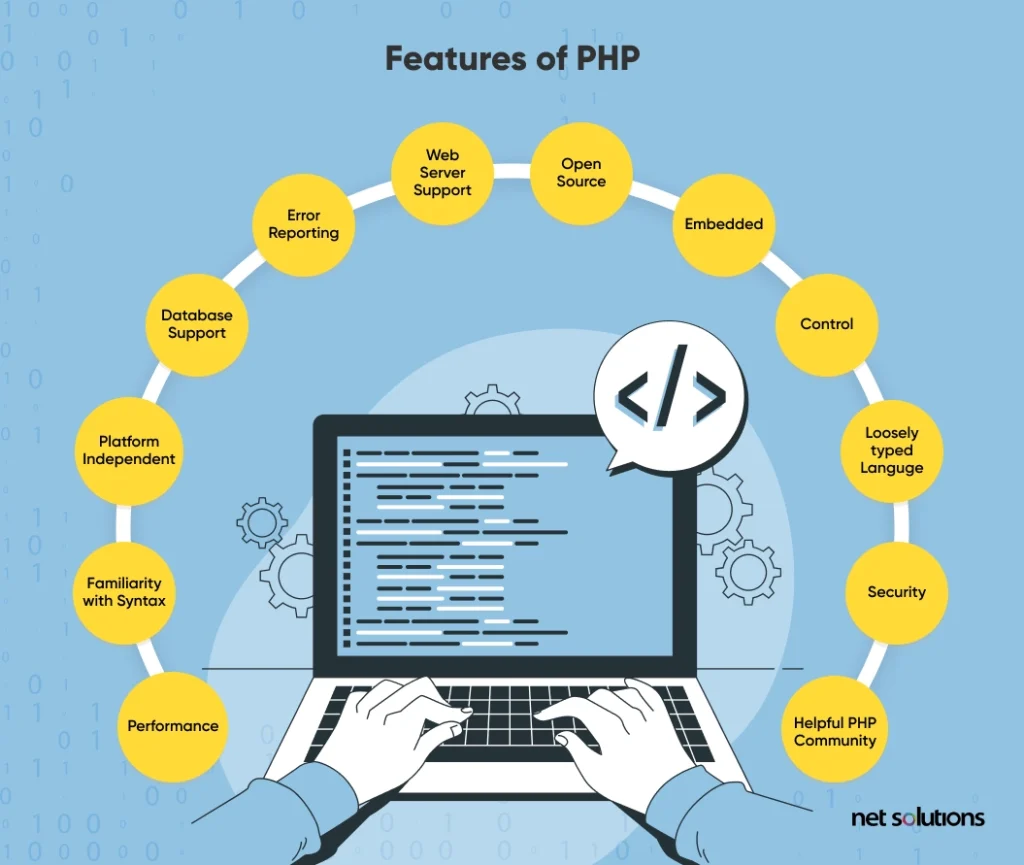
- PHP is open-source, which means anyone can download and use it to accomplish their web development goals. Also, developers worldwide can inspect the code, post errors, or contribute to bug fixes.
- PHP is simple and easy to use compared to many coding languages. Since the syntax is similar to the C language, anyone can get along.
- You can seamlessly integrate databases like Oracle, PostgreSQL, and MySQL with PHP.
- PHP offers cross-platform compatibility, which means you can run it on almost all operating systems and devices.
- The flexible nature of PHP allows you to integrate it with JavaScript, XML, and HTML easily.
- PHP performs faster than many scripting languages, such as ASP.NET, JSP, and PERL.
Besides these basic features, Python also offers PDO class, regular expressions, magic constants, command-line execution, and support for cookies.
What is PHP used for?
PHP is used to build dynamic and interactive websites and web applications. Some popular websites built on PHP are WordPress.com, Wikipedia.org, Facebook.com, Zoom.us, Canva.com, and Microsoft.com. According to W3Techs, around 77.5% of all websites use PHP.
Besides, PHP is also used to build RESTful APIs, SOAP web services, and data processing and visualization.
What is Python?
Python is a multi-purpose, high-level programming language. It was first released in 1991 and initially developed by Guido van Rossum. Over time, Python has become one of the most popular programming languages, adopted by many tech industry household names. Programmers can leverage Python for web development by using frameworks—such as Django, Flask, and Web2Py.
Beside being very popular among system administrators, for instance, Python is one of the most used languages in data science and data analysis, due to the number of great libraries built with the language for these usages. Tweet This
Python is a universal language. Through the years, developers worldwide have contributed to the Python ecosystem, creating several tools and libraries to solve problems over various domains.
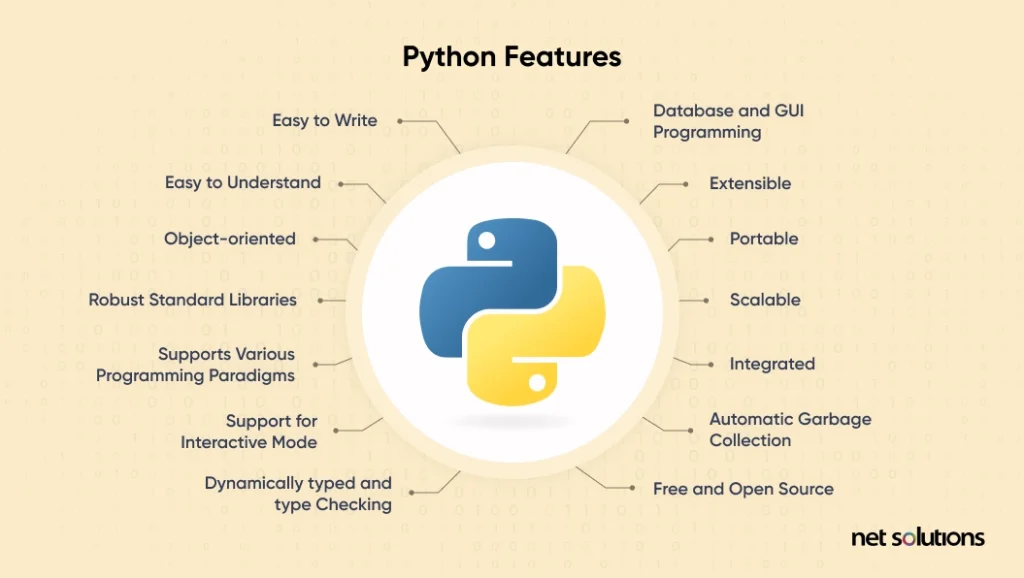
- Since Python is open-source, anyone can download and use it for free. Also, developers can use and modify the publicly accessible source code of Python based on their needs.
- Python is easier to learn than other programming languages, such as Java, C, C++, and JavaScript.
- As an object-oriented programming language, Python lets you access features like object encapsulation, construct and destruct, and classes.
- Python is an extensible language. It means you can write Python code in C++ and compile it without any hassle.
- Since Python codes are executed line-by-line, debugging is much easier and less time-consuming.
- Python code is portable, which means if you’ve written Python code for Windows OS and want to run it on other operating systems, you can do it without changing the code.
What is Python used for?
Here are some simple use cases of Python:
- Web Development: Python has frameworks like Django and Flask, which lets users build web applications quickly and efficiently.
- Data Science and Analytics: You can use Python libraries like NumPy, Pandas, and SciPy for data analysis, visualization, and machine learning.
- Artificial Intelligence and Machine Learning: Developers prefer Python for building complex AI and ML models because of its simplicity and readability.
- Scripting: You can also use Python for automation and scripting tasks like system administration, network programming, and automated testing.
- Game Development: Python has libraries like Pygame that let you quickly develop 2D games.
- Desktop Application Development: You can use Python frameworks like PyQT and wxPython to build cross-platform desktop applications.
Python vs. PHP: An in-depth comparison
1. Speed to Market
What new currency sets a business on the path to success, you ask? Time is the answer.
In today’s highly digitized world, businesses continually look to speed up their digital transformation journey. It would be best to build an MVP as soon as possible to raise funding for further new product development. And this is the primary reason you must choose the correct language for your web application.
As its official website quotes, Python is “powerful… and fast….”
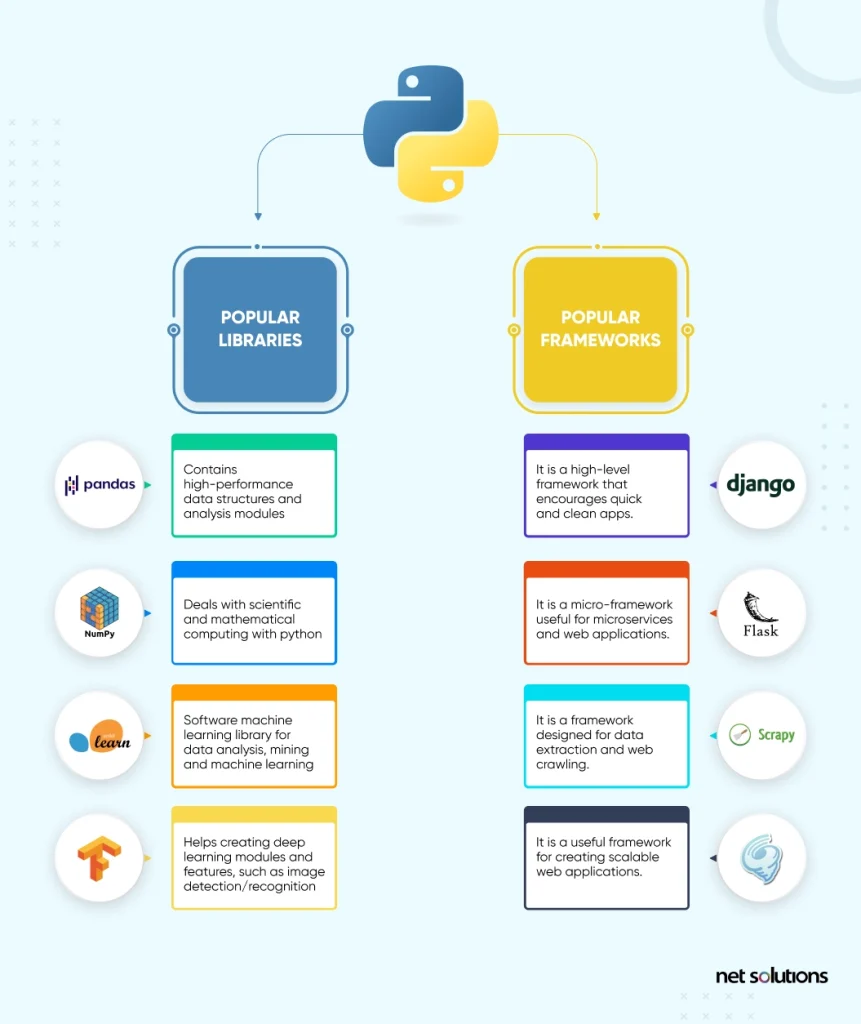
Python has an excellent set of third-party libraries, modules, and packages to complete projects faster. For instance, Django is one of the most famous frameworks for web development written in Python. It leverages the MVC (model-view-controller) pattern to allow developers to create applications with excellent separation of concerns and reusability quickly.
PHP also comes with its tools, including libraries and frameworks. In the PHP camp, the most popular framework is Laravel, which also adopts the MVC pattern and comes pre-packaged with many valuable features for development, such as authentication, routing, templating, and more.
Verdict: For this criterium, we have a draw.
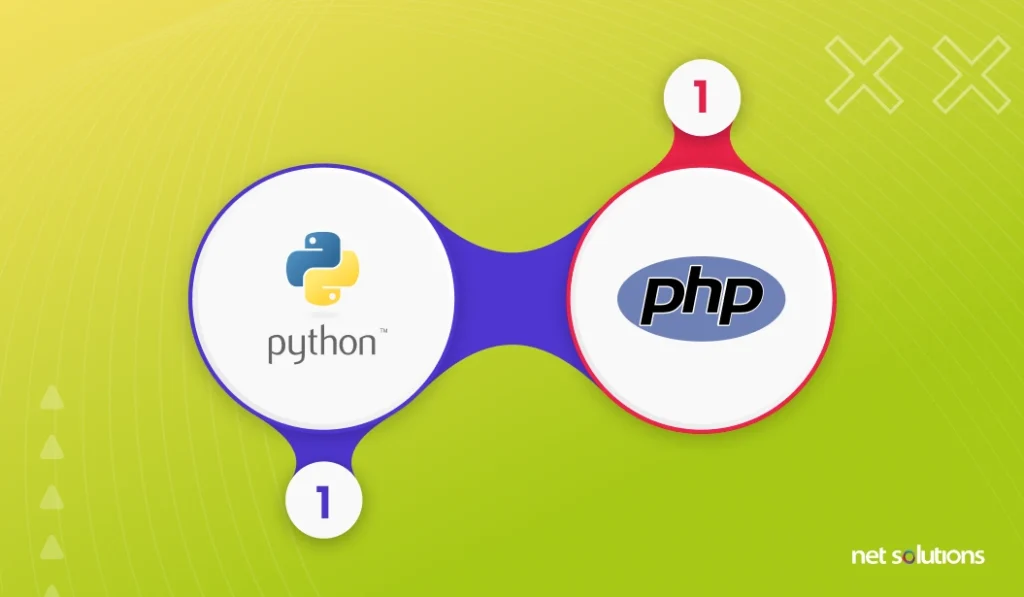
2. Security
Security Vulnerability goes in tandem with the web development process. Here are the reasons why:
- Web development is a rapidly-evolving field where new technologies and frameworks emerge. As a result, it becomes challenging for developers to keep track of the latest security threats and take steps to mitigate them.
- Sometimes, the emphasis may be more on functionality than security. As a result, some security vulnerabilities may slip into the web application that attackers may exploit.
- Human errors, like failing to sanitize user input, can result in serious security vulnerabilities.
The cost and time to fix these vulnerabilities increase exponentially as you progress through the software development lifecycle (SDLC).
The graph indicates that it is 30x times more expensive to get rid of vulnerabilities during the post-production phase than during the design, requirement identification, and architecture stage.
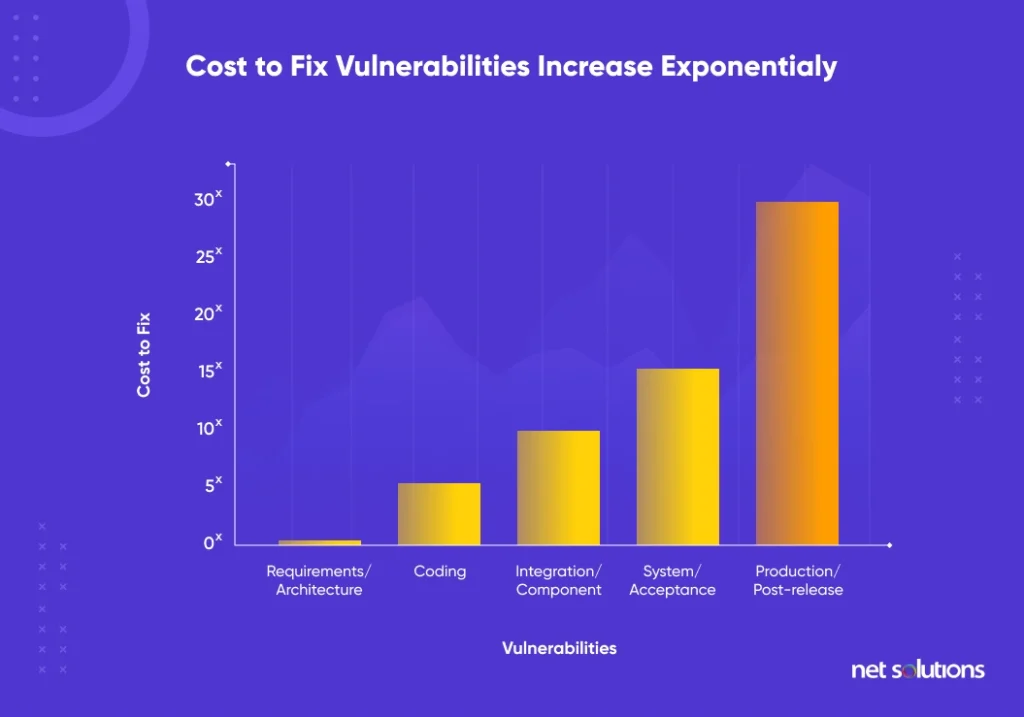
Regarding security, Python is the most recommended choice for businesses. For instance, the Django framework comes up with built-in security features, which help in protecting the application from various security threats.
Moreover, as per WikiLeaks, numerous government agencies like the CIA rely (heavily) on Python as their secret hacking tool. Apart from the CIA, various other US organizations that store sensitive data use Python as their backend language: the Department of Education, the Department of the Navy, and the National Institute of Standards and Technology (NIST), to name a few.
On the other hand, PHP has had a frightful history regarding security. Although most of the security issues have been addressed due to robust community support, PHP fails in terms of security compared to Python.
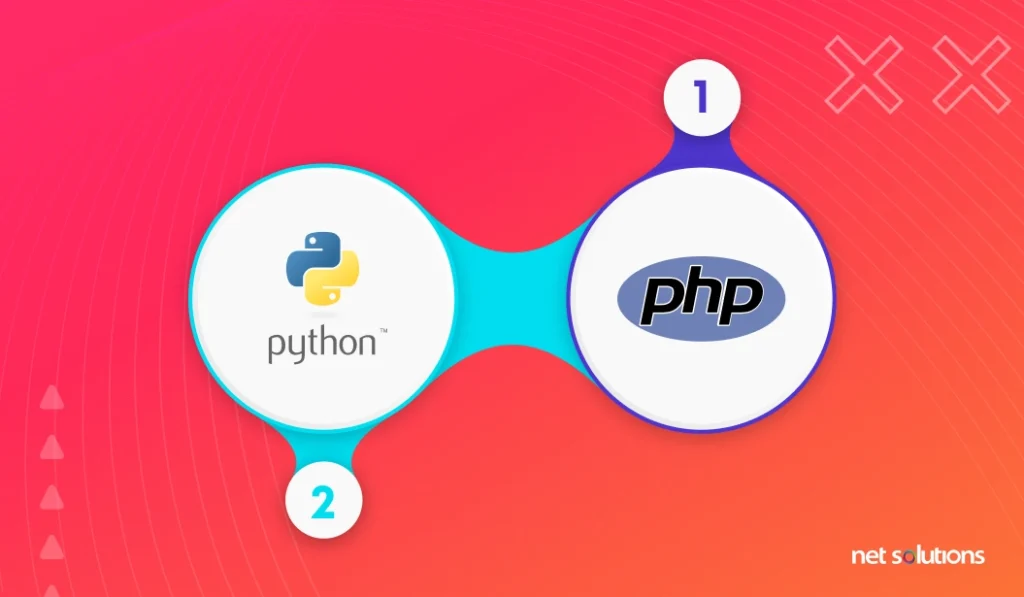
3. Performance
Application/Website speed is a vital factor that helps determine its performance and fluidity. A Google study says that 53% of mobile site visits leave a page that takes longer than three seconds to load. Today’s era of experience relies on speed: releasing software to production multiple times a day is critical.
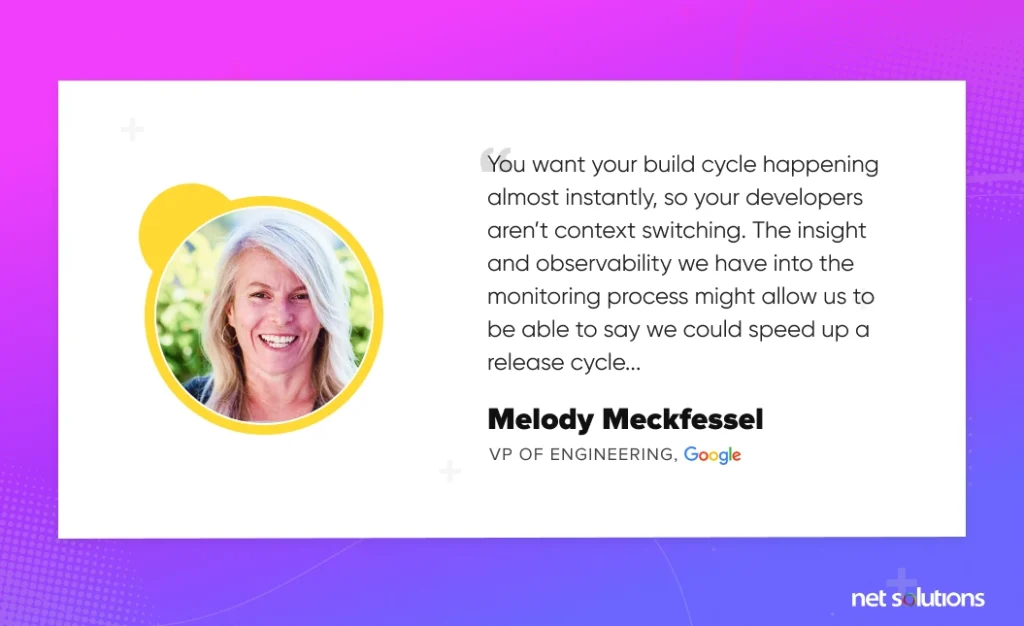
Python, as we mentioned, is fast and powerful. The Just-In-Time compiler of Python makes it faster than its competitor, PHP. One of the main advantages of JIT is that once the files are compiled, they are not needed to be recompiled.
On the other hand, PHP’s earlier versions, PHP 5.x, were much slower than Python’s. However, the release of PHP 7.x brought a turnaround, improving applications’ speed significantly. With PHP 7, Zend Engine 3.0 was released, making PHP 7 twice faster as its predecessor.
Verdict: The winner is PHP. All credits go to Zend Engine 3.0 of PHP 7. However, it’s important to mention that PHP defeats Python just by a marginal difference.
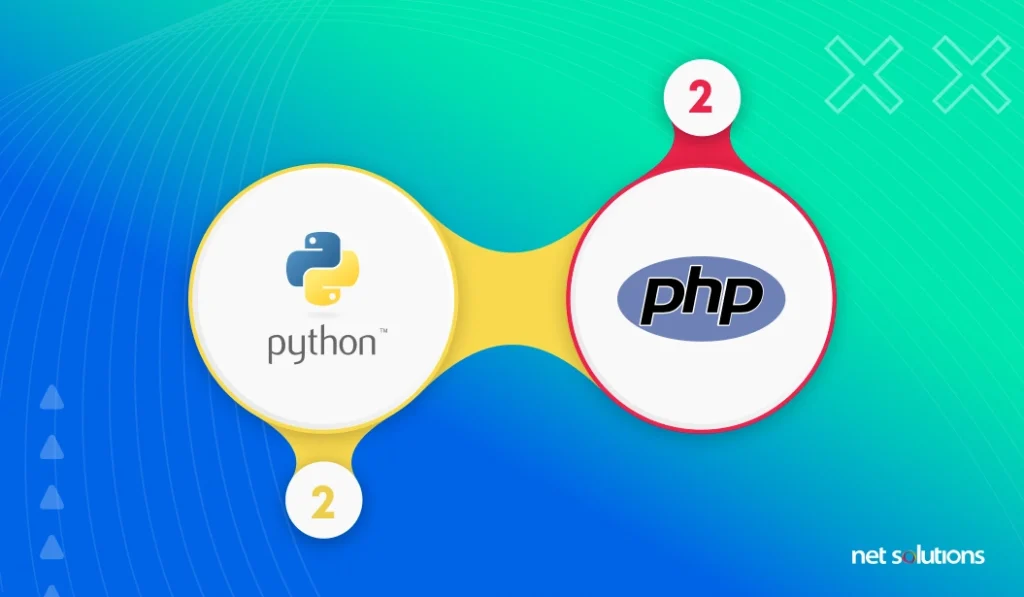
4. Versatility
Nowadays, web applications are more than just developing simple portals or websites for information. Instead, AI is also becoming an essential part of the web and other emerging technologies. All businesses with online customer service portals use advanced AI and machine learning algorithms.
Such algorithms help businesses identify their users more accurately, coupled with machine learning, and identify specific domains of their business that they should funnel their investments.
Uber built an ML platform using Python called Michelangelo PyML (an extension of the initial Michelangelo product). This platform enables them to make predictions, both in online and offline mode, thereby solving day-to-day tasks. Users can validate models with PyML and replicate them in Michelangelo for complete efficiency and scalability.
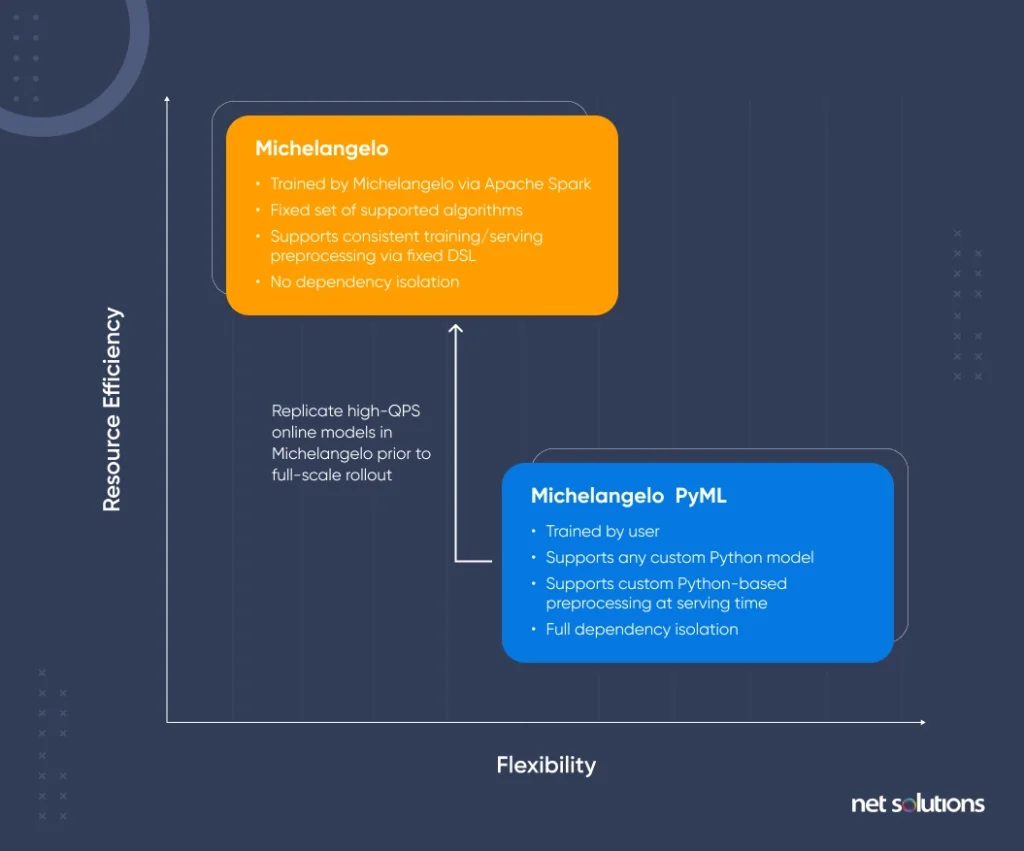
Python has many libraries that are powerful as compared to libraries provided by PHP. These libraries include assistance in all domains, including NLP (Natural Language Processing), image processing, and many others.
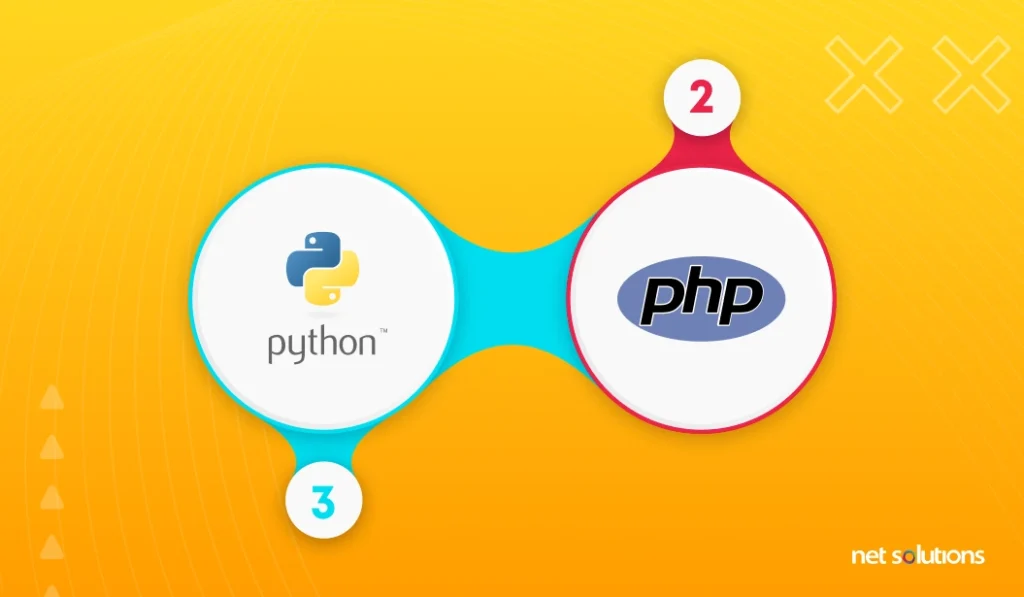
5. Scalability
When products succeed, businesses grow, and as the company sees an upward trajectory, its user base grows too. In this case, it is a priority for any business to have an application that easily adapts to the rapidly changing customer and market demands. Thus, choosing an app development technology that can help your business scale up is essential.
In terms of scalability, the apps built on the Python framework offer high AI and ML capabilities, leading to increased scalability and easy adaptation to evolving trends.
For instance, using the Django framework, you can build scalable apps as this framework constitutes a series of wired-up and ready-to-go components that are decoupled (implies independent from each other). Thus, these components can be unplugged and replaced per the business’s varying demands.
Instagram, for instance, features the world’s largest deployment of the Django web framework. The social networking service credits its decision to pick Python over PHP to the former’s reputation for simplicity and practicality.
Even when Instagram has doubled in size and felt the need to maximize its web service efficiency, Django has helped maintain simplicity and practicality and scaled to handle millions of users.
On the contrary, PHP is less open to growing demands and new trends. Despite its continual improvement, PHP lags behind Python apps, thus losing the ‘Python vs PHP: Scalability’ battle.
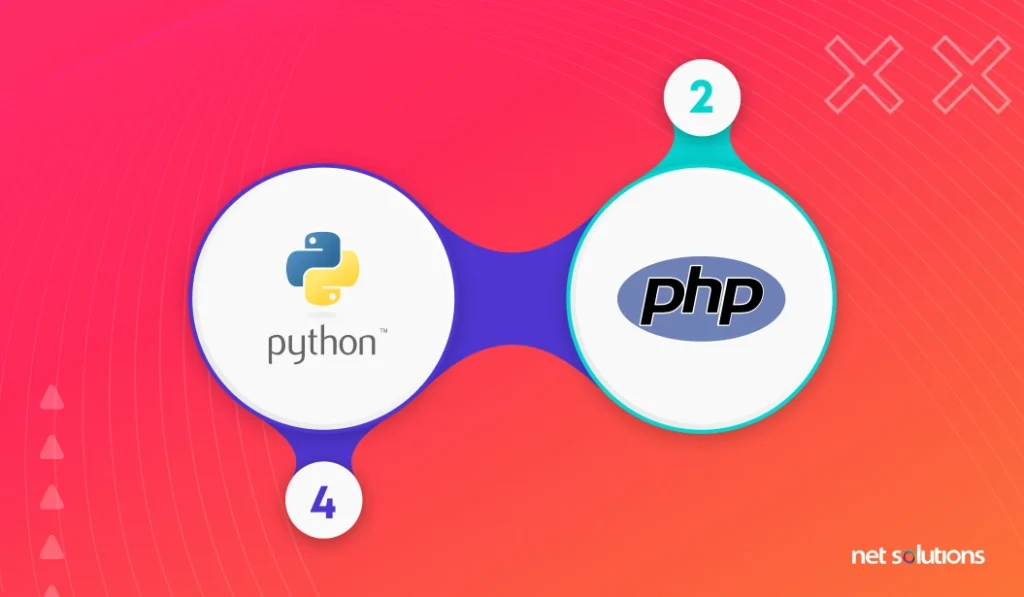
6. Ease of Installation
PHP is easy to install, whether you want to install it on Windows, MacOS, and macOS. Also, it can seamlessly run on all these operating systems. You can even find it on many shared hosting websites worldwide for a minimal fee.
While LinkedIn users can easily install Python, installing the language on Mac OS X and Windows is complicated. The Mac OS X comes preinstalled with Python, which is so outdated that you can’t use it for application development. As a result, you have no choice but to install a new Python version.
Installing Python on Windows is equally tricky. You must use a package manager like Chocolatey to overcome this and avoid issues. However, it is extra work, especially if you plan to use Python as a team.
Verdict: PHP is easier to install on each operating system than Python.
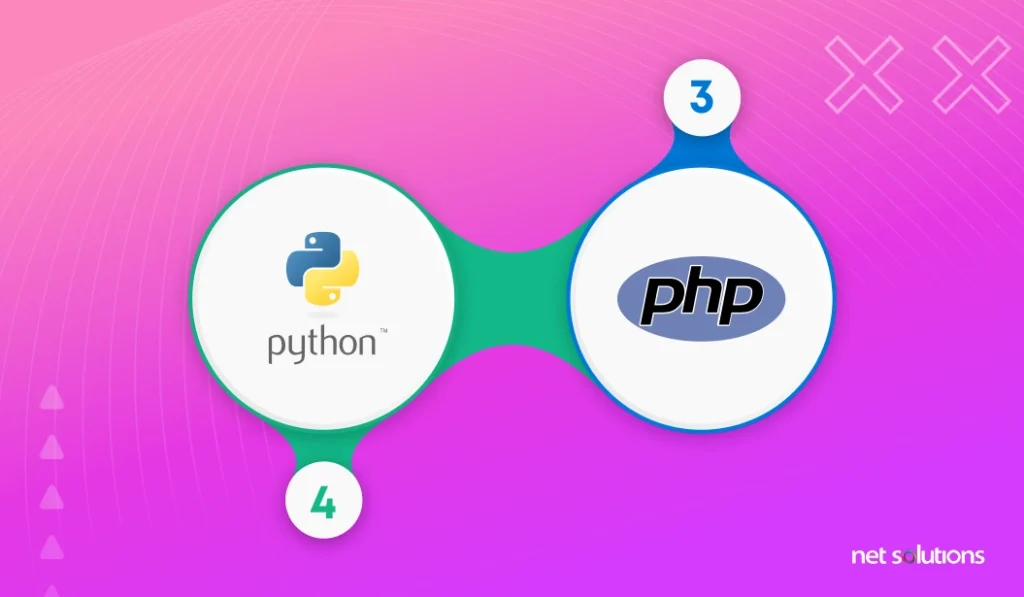
7. Web framework options
Both PHP and Python offer various frameworks for web application development. Common PHP frameworks are Laravel, CodeIgniter, Symfony, and Zend. Laravel, Symfony, and CodeIgniter are widely used because of their rich performance, high scalability, and minimal configuration requirements.
Django, Flask, CubicWeb, Bottle, Pyramid, TurboGears, and Pylons are popular python frameworks. Django and Flask are widely used because of their ease of use and rich features.
Verdict: Both PHP and Python support various web frameworks. Hence, there is a tie in the PHP vs. Python tug of war-regarding web frameworks.
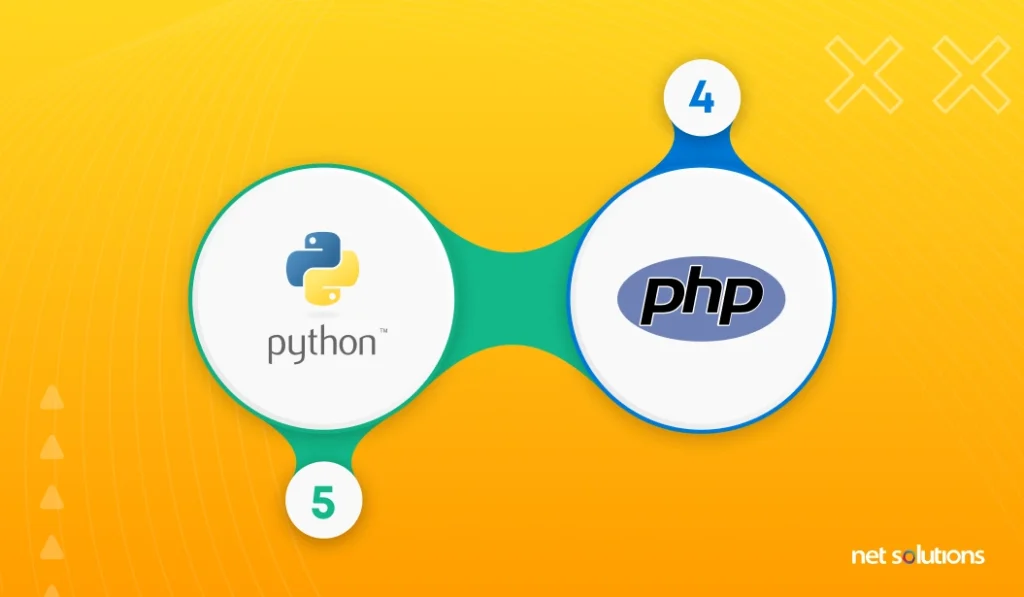
8. Environment Management
Environment management plays a critical role in web application development by offering a controlled and stable development environment for each phase of the application’s lifecycle. It improves collaboration, speeds up development and testing, reduces downtime, enhances security, and successfully delivers high-quality web applications.
virtPHP is the environment manager for PHP. However, it was archived a long time ago. A better option is containers like Docker and Kubernetes, which developers can use to run a software process, a small microservice, or even an extensive application. A container also offers advantages like
- Reduced overhead,
- Consistent operation,
- Increased portability,
- Improved efficiency
On the other hand, Python uses the Virtualenv environment manager, which is highly efficient and valuable for environment management. Using it, you can install and manage multiple Python versions side-by-side. You can even switch versions quickly. Also, Virtualenv is highly popular among developers with 10+ years in the market.
Verdict: Python is the clear winner in terms of environmental management.
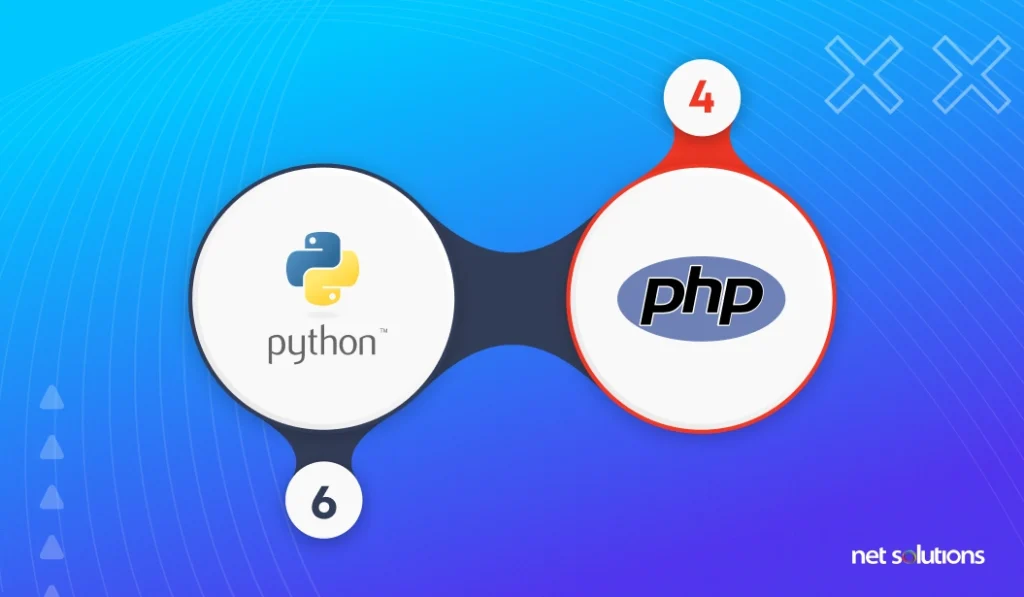
9. Debugging
Debugging is tricky in PHP. However, with PHP debuggers like XDebug, you can quickly get along with it. Similarly, Python has a brilliant debugger called Python Debugger (PDB) that is easy to use, especially if you’re a beginner. All you need is to press the debug button, and you can get rid of bugs in a few seconds.
PHP and Python debuggers like PyCharm and Visual Studio Code also allow integration with IDE – allowing you to track and fix issues seamlessly.
Verdict: Both PHP and Python debuggers are easy to use. Hence, it’s a tie.
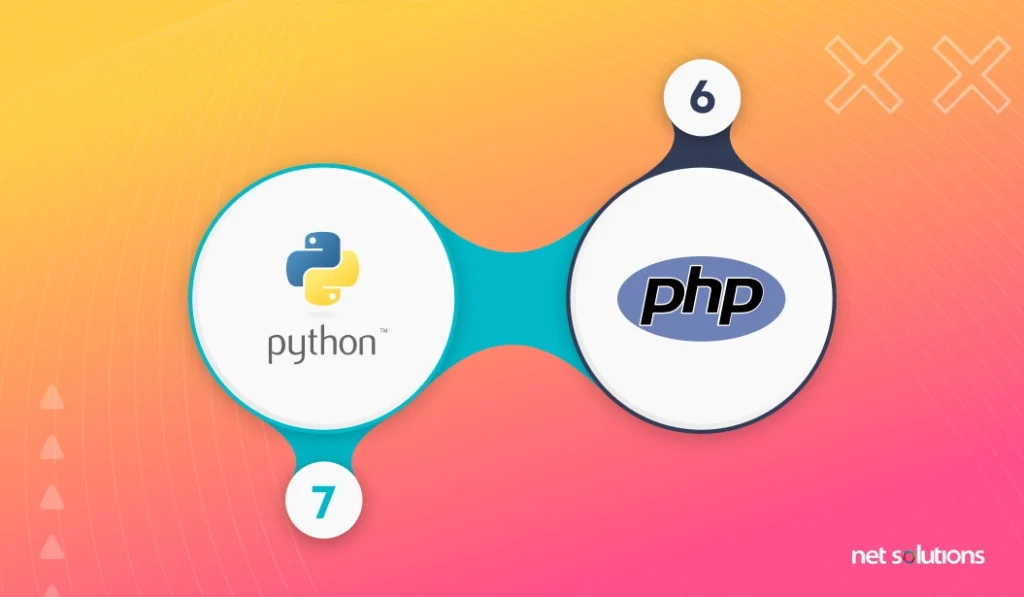
10. Developer Community & Support
Since PHP has been around longer and has a large user base, many online documentation, tutorials, and forums are available. Also, the PHP community manages many open-source projects, libraries, and frameworks. They’re also always ready to help and share their knowledge with others.
On the other hand, Python has a younger but rapidly growing community. The language has become famous recently due to its simplicity, versatility, and efficiency in domains like data science, machine learning, and web development.
The Python community has significantly contributed to the development of many open-source projects, libraries, and frameworks over recent years. You can also find many online resources and forums for Python. If there’s anything you still can’t grasp, you can reach out to its welcoming and supportive developer community.
Verdict: Both PHP and Python have strong and active communities that offer great support. You can easily find websites and platforms to ask questions, hone your skills, or find solutions to any problems with web application development.
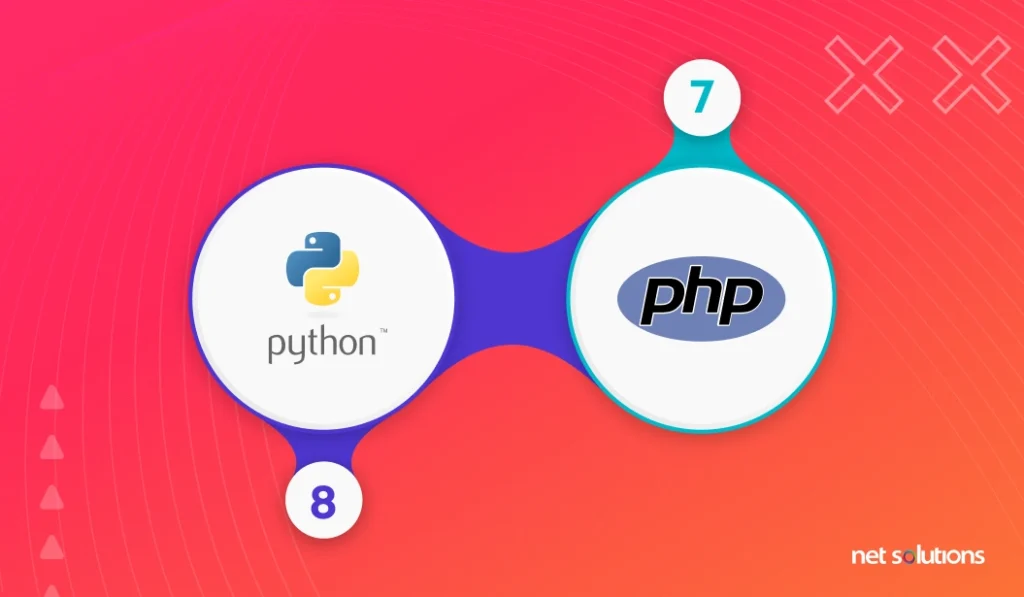
11. Documentation
Both PHP and Python have comprehensive documentation. You can easily find forums, tutorials, discussion boards, websites, and courses for both languages to aid in software development.
PHP even has a documentation website covering everything you need to know about the programming language in over 10 languages. Developers can leave comments on each page to clarify complex concepts with easy examples.
The downside of this feature is that comments, once posted, remain there forever. Hence, comments related to previous versions sometimes show on top, creating confusion. As a result, developers fail to understand what issues have been addressed and what they’re still working on.
Python also has in-depth documentation for each version with a table of contents, new improvements, usage, tutorials, FAQ section, extensions, library references, etc. Also, you don’t see the comments as you did in this documentation – which avoids the confusion but makes it slightly challenging to understand some concepts for new developers.
Verdict: Python documentation is more organized than PHP, as the user comments create a lot of confusion.
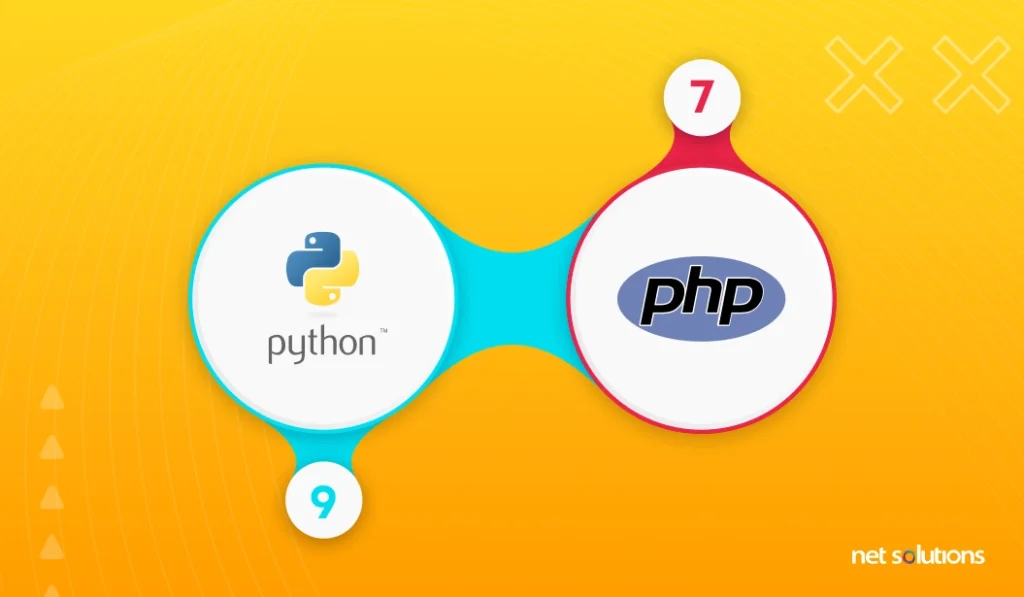
Similarities between PHP and Python
- Python and PHP are open-source, meaning you can use, distribute, and modify them for free.
- Both languages are cross-platform, so you can run them on different operating systems.
- Python and PHP enjoy active community support from developers who are always willing to help you with your queries.
- The code of both languages is executed line-by-line without compiling.
- PHP and Python are high-level programming languages supporting method chaining and dynamic typing.
PHP vs. Python: the differences
| Type of Programming language | PHP is a scripting language for developing web applications. | Python is a general-purpose programming language. |
| Learning curve | PHP is a bit more challenging to learn than Python. | You can easily learn Python. Even beginners can easily get along with it. |
| Popular Frameworks | Laravel, CodeIgniter, Symfony, CakePHP, Zend, Yii. | Flask, Django, Pyramid, Web2Py, Bottle, Tornado, TurboGears. |
| Speed | PHP 7. x and PHP8 are extremely fast, almost 3x faster than Python. | Python is fast and can help develop apps quickly. |
| Database Connectivity | You can seamlessly connect 25+ databases in PHP. | Python allows database connectivity, but not with all databases. Also, it needs drivers to connect with databases. |
| Syntax | PHP syntax is complex | Python syntax is clear and crisp. |
| Library Support | PHP lacks wider library support. | Python offers vast library support for all types of web applications. |
| Popularity | Very popular (around 79% of websites use PHP) | Lest than 1% of websites on the Internet use Python. |
| Readability | PHP is less readable, and maintainable | Python is highly readable and easy to maintain as it was designed to reduce complexities. |
| Functional Programming | PHP does not support functional paradigms. | Python supports functional programming methods. |
| Security | PHP security is a matter of concern, as many security attacks have been witnessed in the past. | Python is secure as it has built-in cybersecurity features. |
| Usage | PHP is mostly for web application development. | Python has broader functions like web and app development, data analytics, AI, and machine learning. |
| Websites built | Facebook, Yahoo, Wikipedia, and WordPress. | YouTube, Instagram, Dropbox, Uber, Quora, Pinterest, and Spotify. |
| GitHub Starts & Forms | 30K Stars & 8.04 Forks | 30.04K Stars and 8.23K Forms |
How Net solutions can Help in Building High-quality Web Applications?
The success of every business lies in robust, high-performing, and user-centric web applications that focus on solving customer’s pain points and maximizing user engagement. Creating such apps is possible only if you’ve a reliable PHP and Python web development services provider who can offer you the right help and guidance throughout the development process.
Net Solutions can help you maximize your reach and engagement with scalable web application development. Contact us if you’re looking to build a new web app or website for your business.

We respect your privacy. Your information is safe.
Frequently Asked Questions
PHP is a simple programming language, so you can quickly learn its basics. However, mastering it takes time, practice, and dedication.
Sometimes, you can use Python to replace PHP for web development. For example, you can use Python to build web applications using frameworks such as Django or Flask. These frameworks function similarly to PHP frameworks like Laravel or CodeIgniter. Also, you can use Python to build web services and APIs, which PHP applications can use.
While many big companies use PHP for web application development, some avoid it for the following reasons:
- Since PHP was designed for small-scale web applications, it can be challenging for some companies to scale PHP web applications to handle high traffic and a large amount of data.
- PHP had some security issues in the past. Hence, some companies prefer using Java and C# in their place as they’re more secure.
- PHP is fast but less efficient than other programming languages, especially when handling extensive data and complex architecture.
- Some big companies use legacy systems built on older technologies like Java or .NET and may find switching to a new language like PHP challenging.
Whether to learn PHP or Python first depends on your goals, interests, and the type of projects you want to work on.
- If your goal is to develop web applications, you should learn PHP first.
- If you’re into data science and machine learning, you should learn Python first.
- f you’re a beginner looking to learn a new language, you should choose Python as it is easy to understand and has a less steep learning curve.

